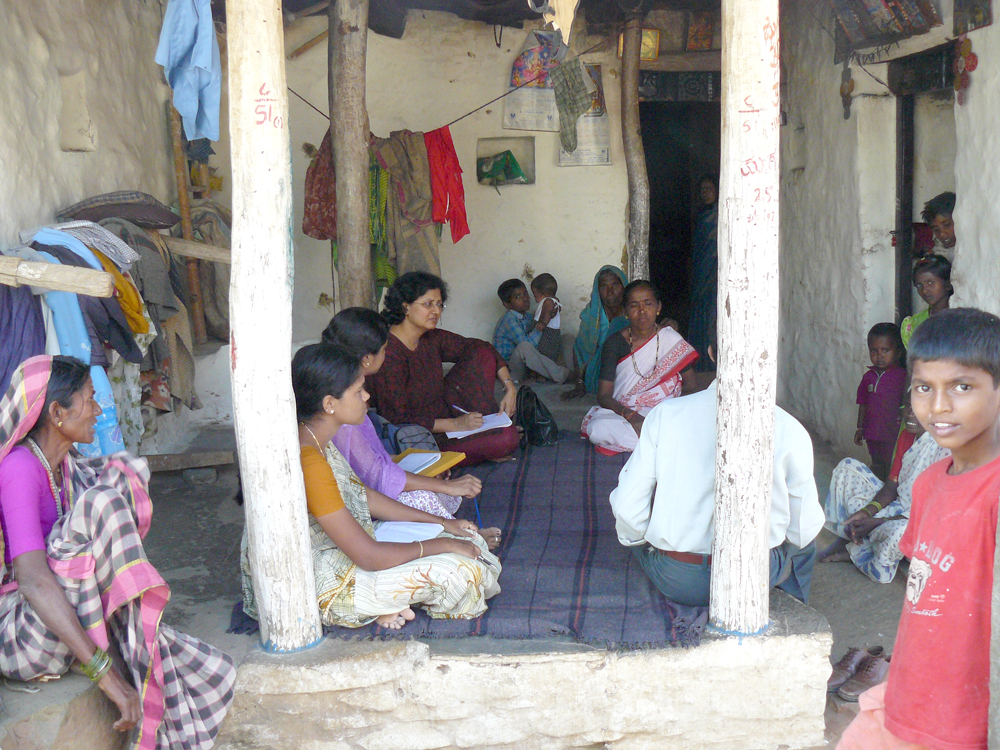Mixed-Methods/Narrative Economics
- Using Large-Language Models for Qualitative Analysis Can Introduce Serious Bias (with Julian Ashwin and Aditya Chhabra), November 2023
- A Method to Scale Up Interpretive Qualitative Analysis with An Application to Aspirations among Refugees and Hosts in Bangladesh (with Julian Ashwin, Monica Biradavolu, Nandini Krishnan, Afsana Khan, Arshia Haque and Peer Nagi), May 2022
- Can Economics Become More Reflexive? Exploring the Potential of Mixed-Methods, January 2022
- Evidence-Based Development Requires a Diversity of Tools, with a Bottom-Up Process of Embedded Dialogue, World Development, 2019
- Deliberative Inequality: A Text-As-Data Study of India’s Village Assemblies (with Ramya Parthasarathy and Nethra Palaniswamy), June 2017
- Unheard Voices: The Challenge of Inducing Women’s Civic Speech (with Ramya Parthasarathy and Nethra Palaniswamy), June 2017
- On the Frontlines of Scaling-Up: A Qualitative Analysis of Implementation Challenges in Rural India (with Shruti Majumdar and Paromita Sanyal), April 2017
- “Who Should be at the Top of Bottom-Up Development,” (with Shareen Joshi), Journal of Development Studies, 2017
- “The Anatomy of Failure: Integrating Ethnography with a Randomized Control Trial to Evaluate an Attempt to Deepen Democracy in Rural India,” (with Kripa Ananthpur and Kabir Malik), World Development, 2017
- “Conducting Ethical Economic Research: Complications from the Field,” (with Harold Alderman and Jishnu Das),Oxford Handbook on Professional Economic Ethics, George Demartino and Dierdre McCloskey, editors, Oxford University Press, 2013
- “Who has Voice in a Deliberative Democracy? Evidence from Transcripts of Village Parliaments in India,” (with Radu Ban and Saumitra Jha), Journal of Development Economic,Vol. 99 #10, Pp: 428-438, November 2012
- Using Mixed Methods in Monitoring and Evaluation: Experiences from International Development (with Michael Bamberger and Michael Woolcock), in SAGE Handbook of Mixed-Methods in Social and Behavioral Research (A. Tashakkori and C. Tedlie, editors), 2010
- “Book Review of Mixed Method Data Collection Strategies by William Axinn and Lisa Pearce,” Economic Development and Cultural Change, February 2010
Kripa Ananthpur conducting interviews in Karnataka
© V. Rao
- “Governance in the Gullies: Democratic Responsiveness and Community Leadership in Delhi’s Slums,” (with Saumitra Jha and Michael Woolcock), World Development (forthcoming), 2006
- “The Social Impact of Social Funds in Jamaica: A “Participatory Econometric” Analysis of Targeting, Collective Action, and Participation in Community-Driven Development,” (lead author with Ana Maria Ibanez) Journal of Development Studies, vol. 41, No. 5, Pp: 788-838, July 2005
- “Experiments in Participatory Econometrics: Improving the Connection Between Economic Analysis and the Real World“, Economic and Political Weekly May 18th, 2002, 22(20), 1887-91
- “Integrating Qualitative and Quantitative Approaches in Program Evaluation,” (with Michael Woolcock), in Francois Bourgingnon and Luiz Pereira Da Silva (edited) Tool Kit for Evaluating the Poverty and Distributional Impact of Economic Policies, World Bank and Oxford University Press, 2003
- “Poverty and Public Celebrations in Rural India,” Annals of the American Academy of Political and Social Science,” Vol. 573, Pp: 85-104, 2001
- “Celebrations as Social Investments: Festival Expenditures, Unit Price Variation and Social Status in Rural India,”Journal of Development Studies , October 2001
- “Price Heterogeneity and Real Inequality: A Case-Study of Poverty and Prices in Rural South India” Review of Income and Wealth, Series 46 #2, Pp: 201-212, June 2000
- “Can Economics Mediate the Link Between Anthropology and Demography?” Population and Development Review, Vol. 23 #4, Pp:833-38, December 1997
- “Wife Beating in Rural South India: A Qualitative and Econometric Analysis,” Social Science and Medicine , Vol. 44, # 8, Pp. 1169-1180, April 1997. For this paper please see this extended version: “Wife-Abuse, Its Causes and Its Impact on Intra-Household Resource Allocation in Rural Karnataka: A “Participatory Econometric” Analysis, in Gender, Population, and Development, M.Krishnaraj, R.Sudarshan, A.Sharif (ed.), Oxford University Press, 1998

